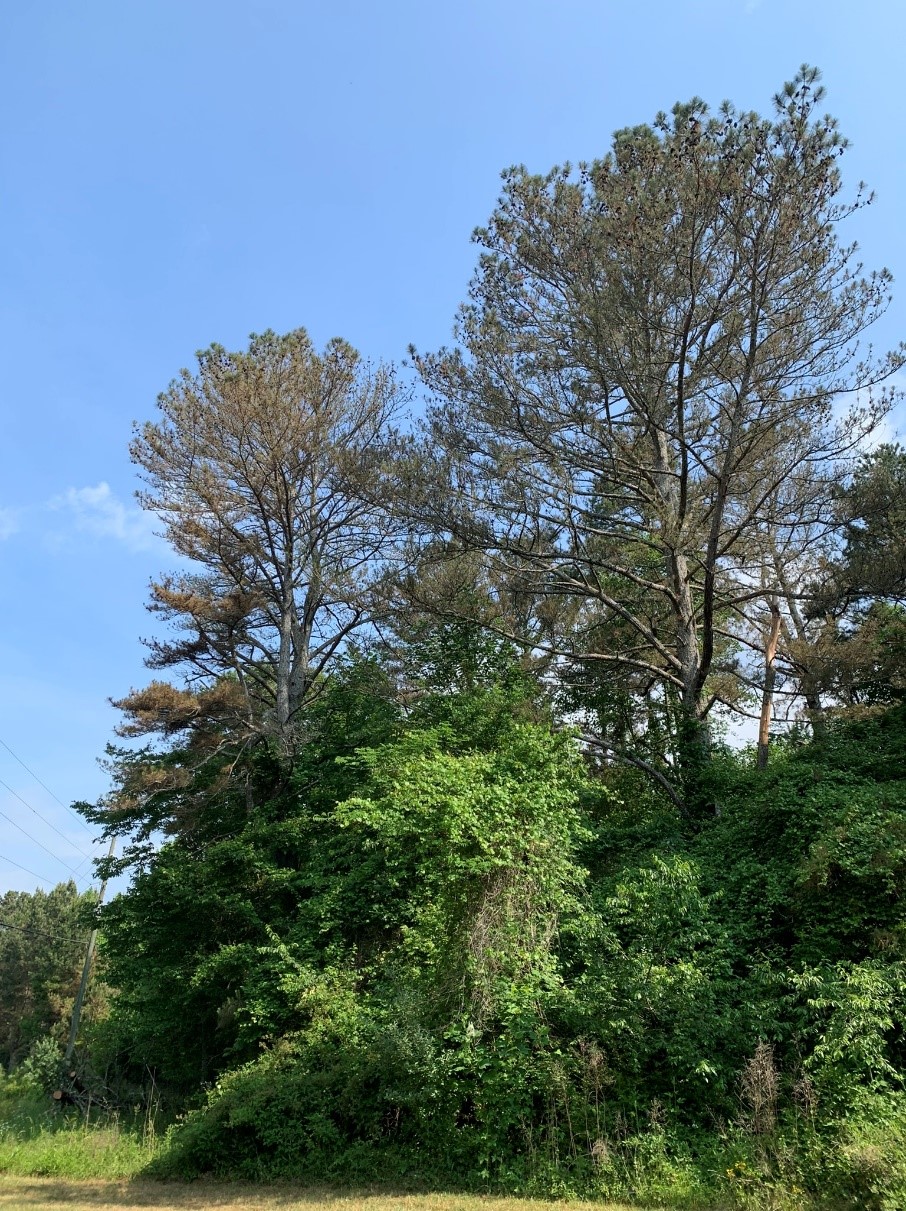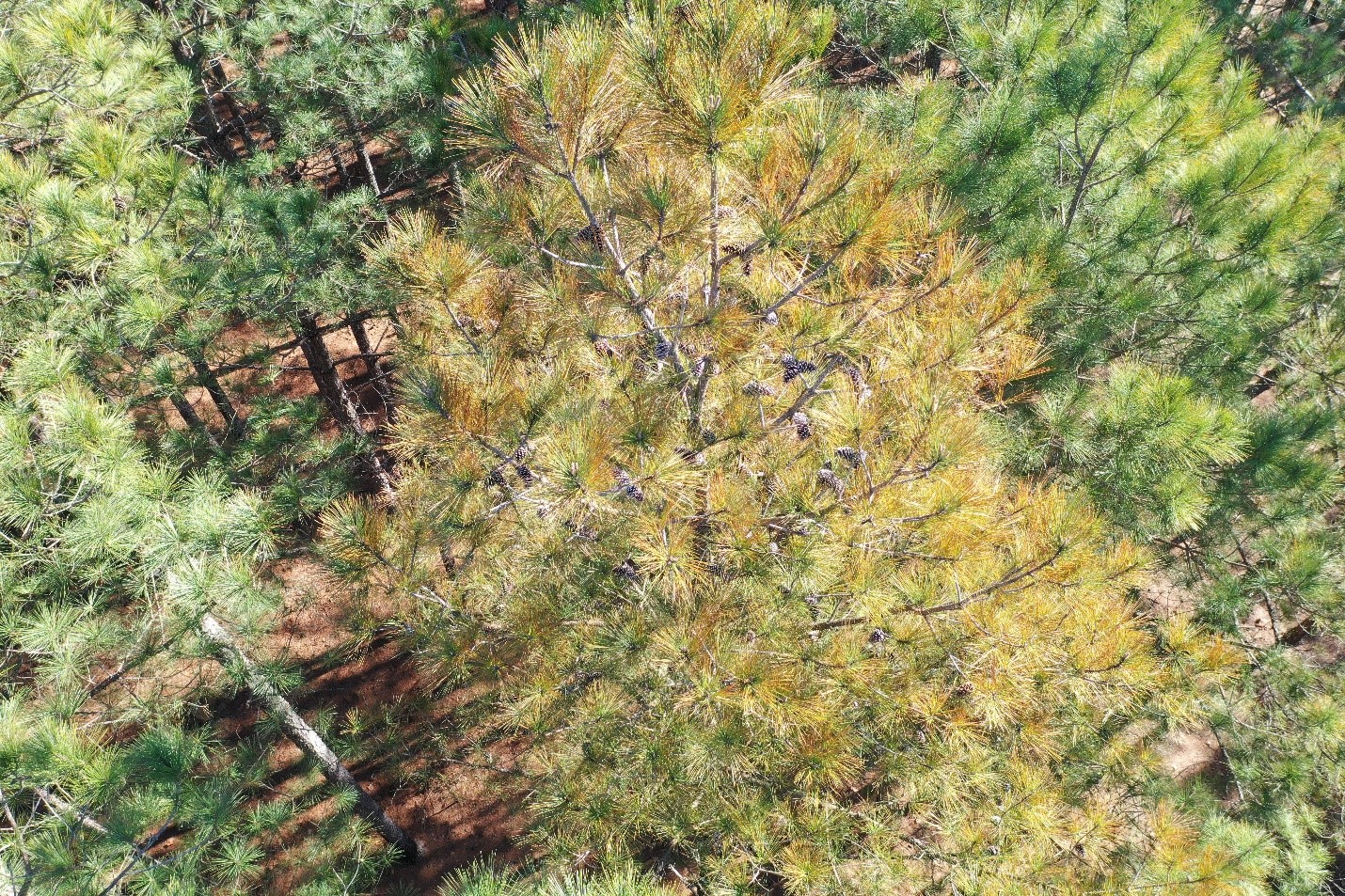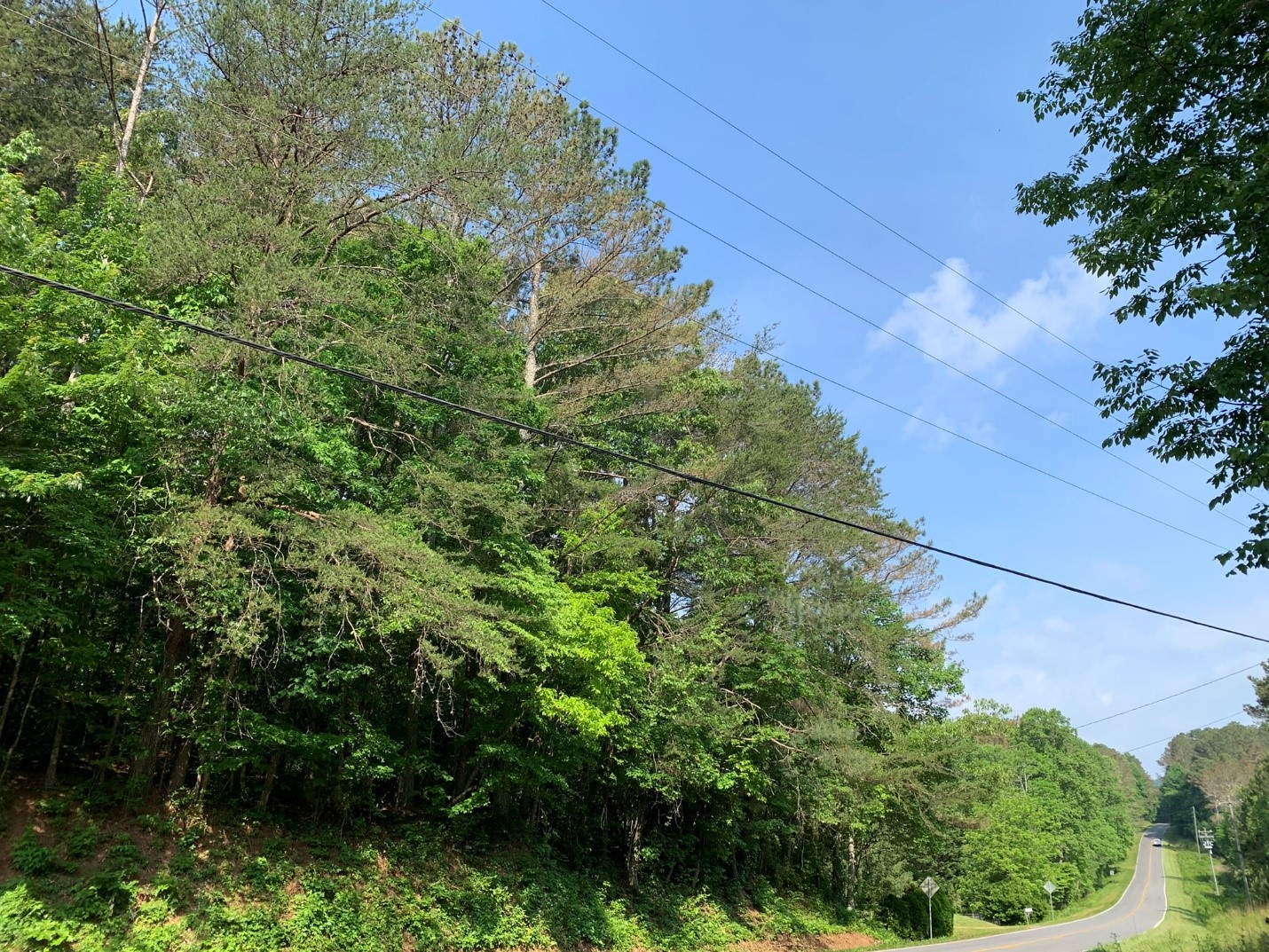
GFC Guest Blog:
Forest Health Needlecast
by Lynne Womack, Forest Health Coordinator
The term needlecast can refer to two different things in our native pines: the natural process of needles dropping or a fungal disease that can affect needle health. This spring, landowners in north Georgia (mostly central and east) reported large numbers of “dying” pine trees. In reality, there is no reason to be alarmed! These trees aren’t dying, but they do have a fungal infection that causes needlecast.
Here in the Southeast, several genera of the fungus Lophodermium bring on the problems. While this can affect all of our southern pines, longleaf pine is generally resistant to these pathogens. Across areas of north Georgia, landowners reported that the needles on their pines suddenly turned brown. These trees were most likely infected by the natural occurring fungus sometime last fall. Cool, wet falls have a tendency to harbor higher amounts of these needle diseases, with symptoms not showing up until the next spring. Needlecast symptoms start as brown or yellow spots on the needles in early spring, and progress to needle browning that looks like scorching left by wildfire. These needles are typically dropped as spring moves on and are replaced by new green needles forming tufts at the end of each branch. While these trees may look like they are dying, needlecast rarely causes trees to die.

Needlecast should not be mistaken for brown spot needle blight (BSNB). Brown spot needle blight is caused by the fungal pathogen, Lecanosticta acicula, and is typically associated with longleaf pine seedlings. In longleaf seedlings (during the grass stage), BSNB looks like the outer needles are dead, but the bud remains green with new growth. BSNB is easily controlled in young longleaf stands with the use of prescribed fire. While BSNB has been found in loblolly pine in Alabama, Arkansas, Louisiana, and Mississippi, it has NOT been found in loblolly pine in Georgia.

So, while needlecast appears to have hit the northern part of the state hard this year, its presence is somewhat sporadic and seems to be related to cool, wet fall weather. As we move into early summer the trees that had some symptoms of needlecast are now showing new growth at the ends of their branches and are on their way to a full recovery.
If you have any questions about needlecast or other forest health issues, contact your county forester; https://gatrees.org/about/county-contacts/. Learn more about needlecast here: http://www.state.sc.us/forest/pubs/pineneedlecast.pdf.

